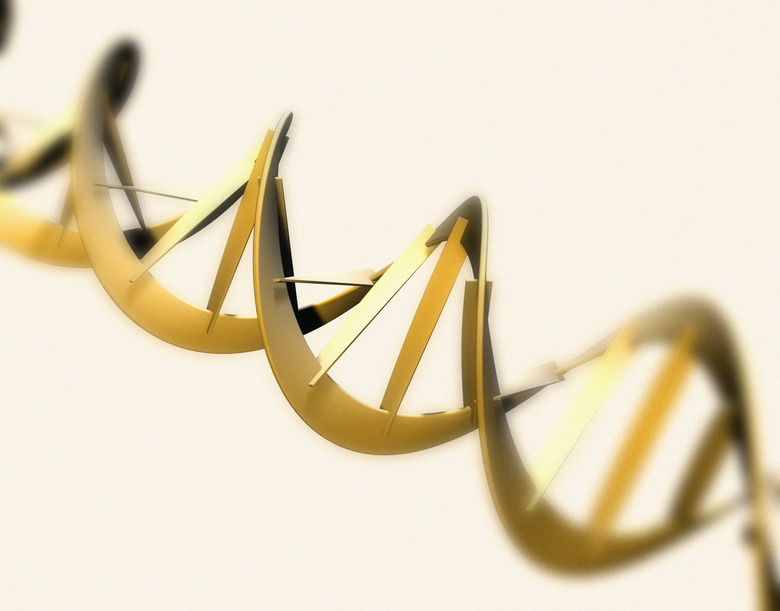The DNA molecule comes in a twisted ladder shape called a double helix. DNA is made up of subunits known as nucleotides. Each nucleotide is made up of a sugar, a phosphate, and a base. Four different bases make up a DNA molecule, classified as purines and pyrimidines, which are nucleotides that form the building blocks of nucleic acids. Each of the twisted ladder’s “rungs” are built up inside the ladder’s frame out of these bases. Creating a model of a DNA structure makes it easier to understand the molecule’s astonishing architectural genius.
Labeling the Twisted Ladder
Step 1
Alphabetize the DNA rungs. A DNA strand is made of four bases, classified with the letters A, C, T, and G. A stands for adenine (a purine); C stands for cytosine (a pyrimidine); G stands for Guanine (also a purine); and T represents Thymine (a pyrimidine). The “rules” are that C always pairs with G, and A always pairs with T. Each set of letters–paired with it’s corresponding opposite letter–creates a new “rung” of DNA. This rung creates coded information for that cell. Label your model paring half of the rung with an A, C, T, or G and its appropriate pair.
Step 2
Label the gap. Between the lettered rungs there is a gap. That gap is called the hydrogen bond. On your DNA molecule model or paper, point out and label the hydrogen bond.
Step 3
Name the frame. The twisted frame of the DNA molecule–the sides of the ladder– is the sugar phosphate backbone. Mark this on your model or diagram.
TL;DR (Too Long; Didn’t Read)
The DNA alphabet “letters” make up “words” when grouped in threes: for example, ATG CTC GAA, and so on. These “words” then create “sentences” when strung together. These DNA “sentences” are called genes.

